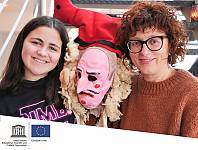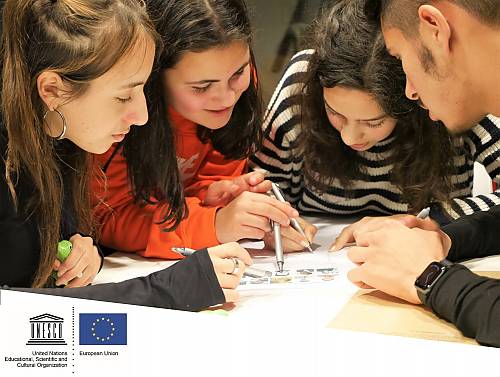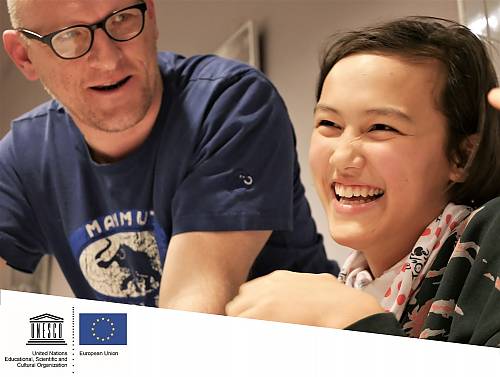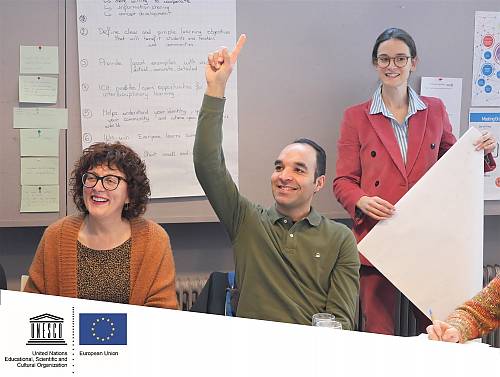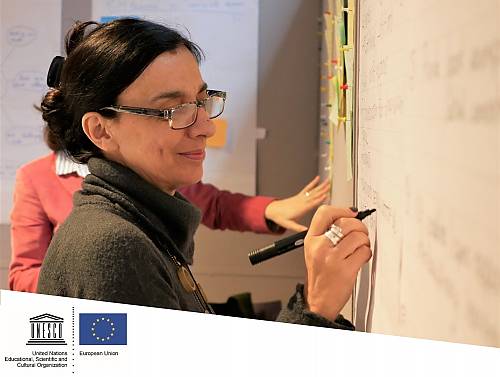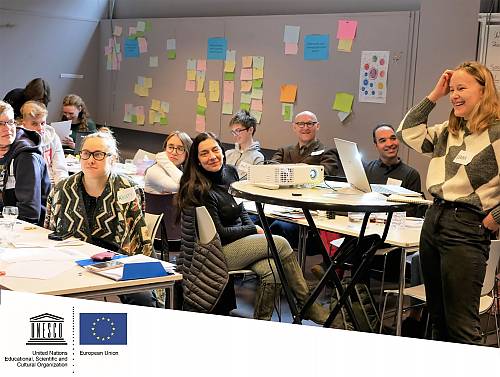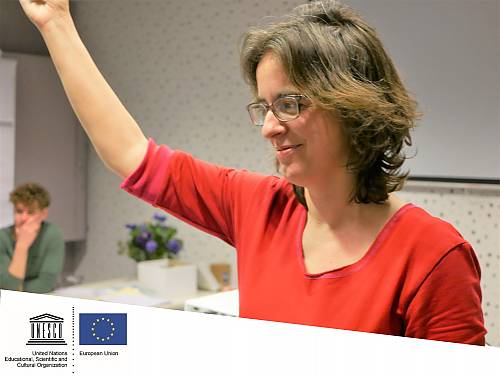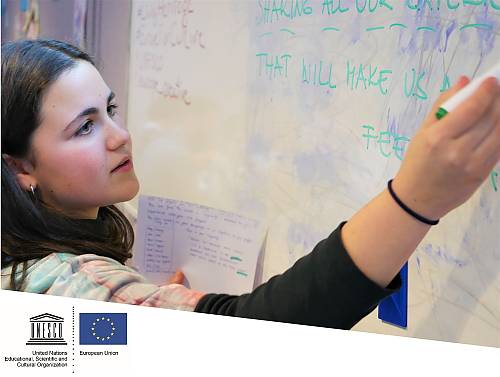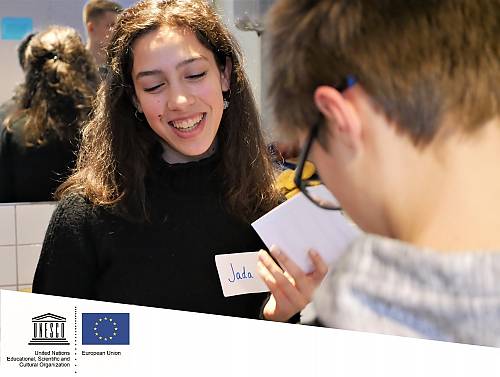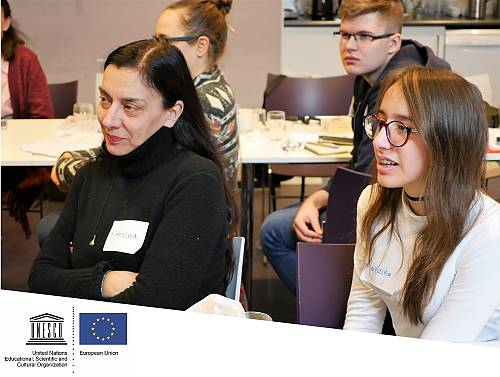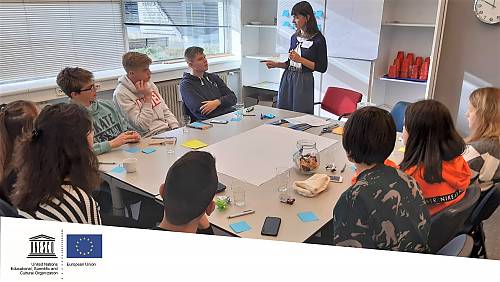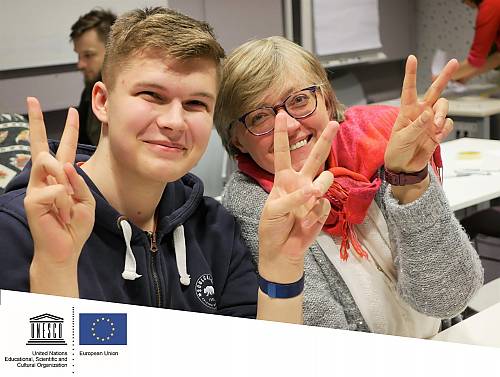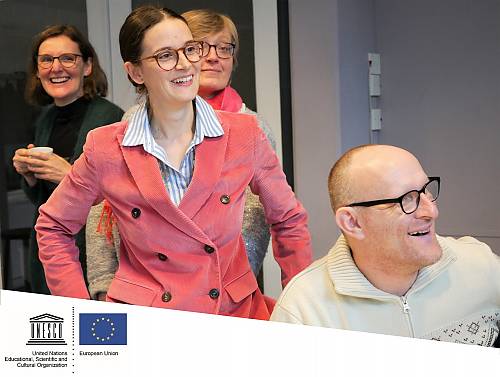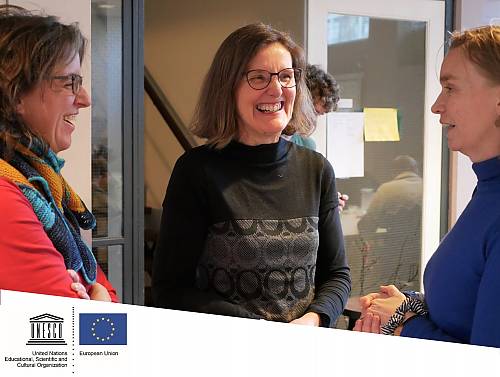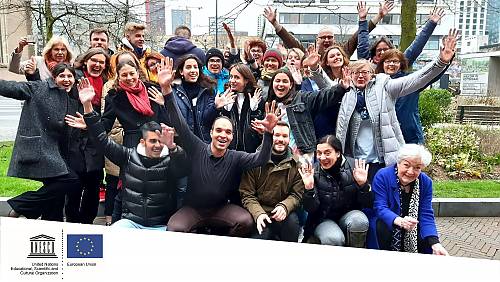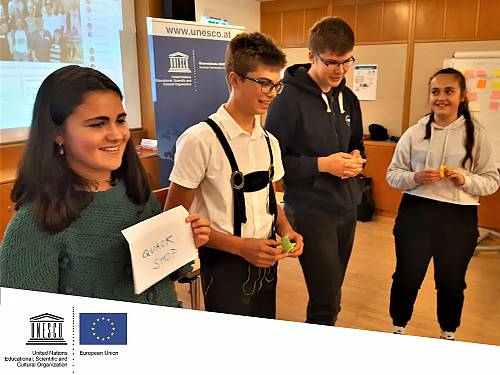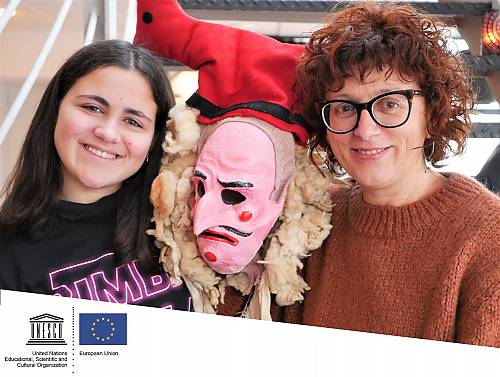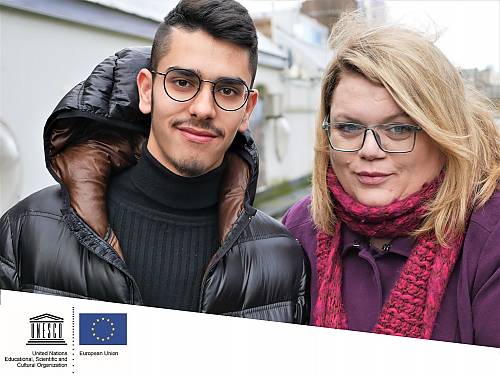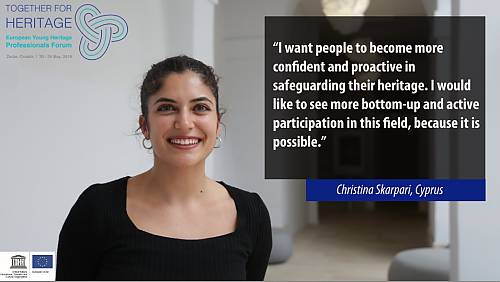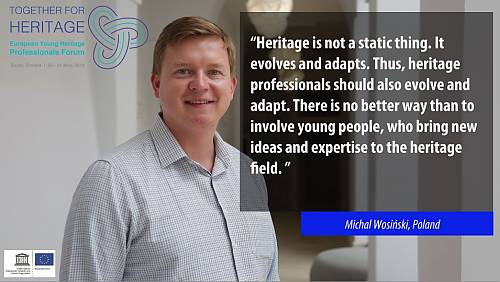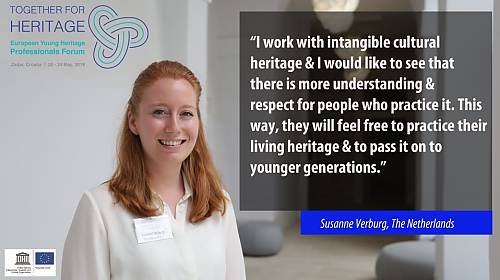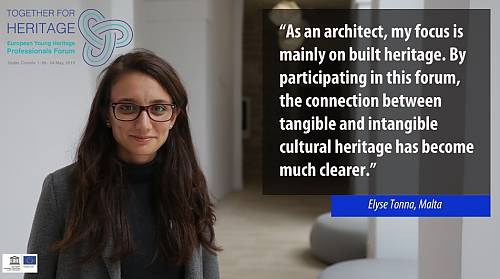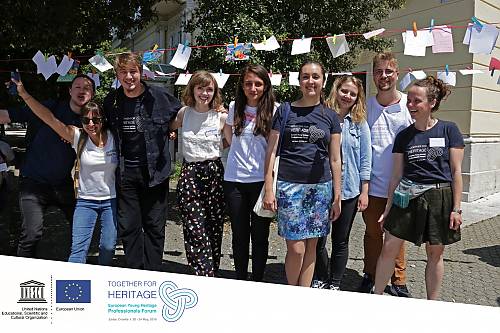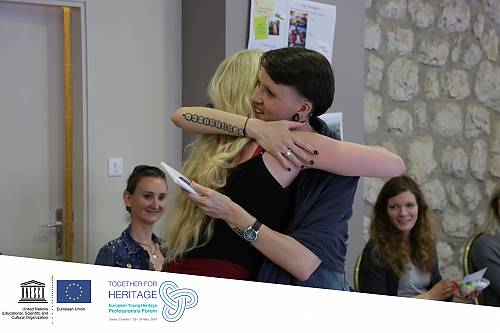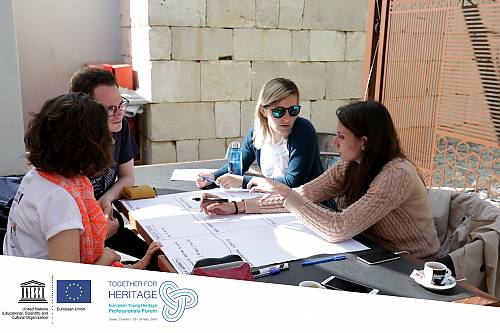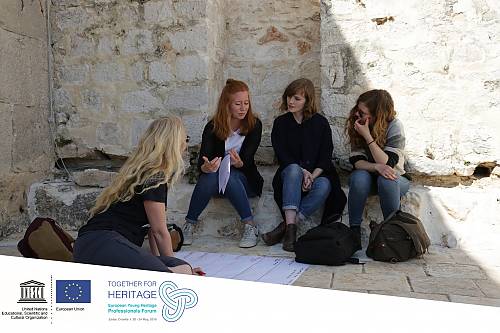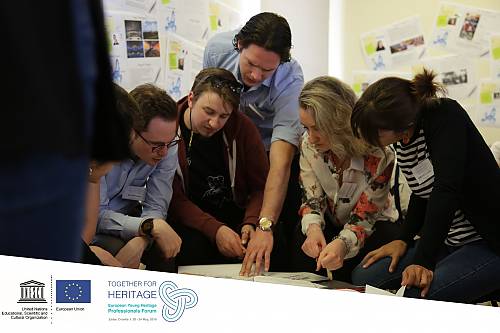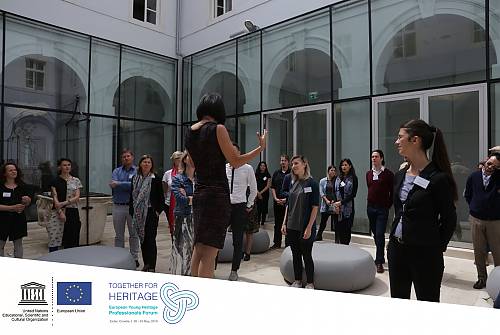Engaging Youth for an Inclusive and Sustainable Europe
UNESCO and the European Union have teamed up for a new project to strengthen the connections between young people, cultural heritage and education. The project proposes an innovative approach to education by inviting teachers and learners to explore their living heritage and learn not only about it, but also with and through it. Moreover, the UNESCO-EU initiative will bring together young professionals working in the fields of tangible and intangible cultural heritage for a tailored regional training forum.
- Project description
- 1. Raising awareness for and learning with intangible cultural heritage in European schools
- 2. Empowering and engaging young heritage professionals in the protection and safeguarding of cultural heritage – the European Young Heritage Professionals Forum
- Expected impact of the project
2018 European Year of Cultural Heritage: Engaging youth for an inclusive and sustainable Europe
Project description
The project will be implemented over the course of 2 years and 3 months (January 2019 to April 2021) along two main components:
1. Raising awareness for and learning with intangible cultural heritage in European schools
In close collaboration with the UNESCO Associated Schools in the European Union (ASPnet members), UNESCO has carried out a series of activities to help schools map the living heritage present in the school community and explore how it can be integrated in lesson plans and extracurricular activities. This experience has confirmed that by teaching subjects such as mathematics, physics, computer-aided design or literature with living heritage, schools can contextualize the knowledge and demonstrate the importance of intangible cultural heritage in students’ everyday lives. It can also stimulate students’ curiosity and promote safeguarding – all while making learning more exciting and accessible and increasing the quality of education.
As an initial step, UNESCO has launched a survey on the experiences that schools may already have in integrating living heritage in school-based learning. The survey results will be published on UNESCO’s web-page in English and French together with some of the experiences identified across Europe.
A series of small innovative pilot projects of learning with living heritage across different core subjects was implemented in 10 ASPnet schools from Austria, Belgium, Cyprus, Czech Republic, Estonia, Greece, Lithuania, Poland, Spain and the Netherlands. While benefitting from an initial training and the guidance of two UNESCO trained facilitators, the 10 teams of one teacher and one learner (13 to 17 years old) per school have developed and implemented small innovative pilot projects in their schools in close cooperation with their families, communities, local NGOs and other partners.
Based on the survey results and the lessons learnt from the 10 pilot projects, a set of awareness-raising and guidance materials for integrating intangible cultural heritage in school-based learning is currently being finalized.
The 2003 Convention for the Safeguarding of the Intangible Cultural Heritage recognizes the important role that education holds for the recognition of, respect for and enhancement of living heritage in society.
The transmission of intangible cultural heritage through formal and non-formal education is part of the proposed safeguarding measures at a national level. Teaching and learning with living heritage in primary and secondary schools also contributes to attaining Sustainable Development Goal 4 – Quality Education, in particular target 4.7. which advocates for the “appreciation of cultural diversity and of culture’s contribution to sustainable development”.
“It was important to understand that by integrating living heritage in lesson plans and extracurricular activities, we also contribute to its safeguarding. Knowing that we are doing something with a greater impact, that we are playing a role in something larger, makes us feel very proud. After this experience, we will continue to teach with living heritage.” – Aikaterini CHRISTODOULOU (Greece), pilot project teacher
2. Empowering and engaging young heritage professionals in the protection and safeguarding of cultural heritage – the European Young Heritage Professionals Forum
“Heritage it is an inherent part of our identity. It is a way to understand each other better” mentioned Victoria Kelly, one of the participants to the European Young Heritage Professionals Forum that gathered young practitioners with a background in both tangible and intangible cultural heritage. Participants came from the 28 Member States of the European Union to discuss the multifaceted realities of working in the field of cultural heritage at the local, national, and international levels.
As a new generation of professionals and Cultural Heritage Messengers, they bonded over a common vision for heritage, in which tangible and intangible heritage are inextricably linked and the active participation of local communities is indispensable for their protection and safeguarding.
The European Young Heritage Professionals Forum took place in Zadar, Croatia, from 20 to 24 May 2019. The Forum was hosted by the Croatian Commission for UNESCO and the Ministry of Culture of the Republic of Croatia - developed in close cooperation with the NGO Diadrasis.
Read more about the Forum here
Expected impact of the project
Initiated in the context of the European Year of Cultural Heritage (EYCH2018), the joint project will contribute to furthering the long-term objectives of the Year by encouraging and stimulating young people to explore their cultural heritage and actively participate in its safeguarding and transmission.
The UNESCO-EU project hopes to stimulate knowledge sharing and understanding of cultural heritage among young people, as well as critical thinking on the function and meaning of heritage in their lives and the lives of their families, communities and societies. The project activities will furthermore provide examples of safeguarding cultural heritage through education, underlining its contribution to building an inclusive and sustainable Europe.
Upon completion of the project, schools, learners and young heritage professionals are expected to have a better understanding of the diversity of their cultural heritage and its importance for the future, and to be empowered to participate in its preservation and safeguarding.
